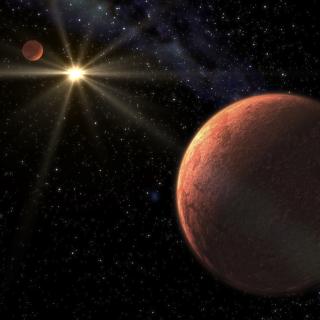Bibcode
Cortés-Contreras, M.; Caballero, J. A.; Montes, D.; Cardona-Guillén, C.; Béjar, V. J. S.; Cifuentes, C.; Tabernero, H. M.; Zapatero Osorio, M. R.; Amado, P. J.; Jeffers, S. V.; Lafarga, M.; Lodieu, N.; Quirrenbach, A.; Reiners, A.; Ribas, I.; Schöfer, P.; Schweitzer, A.; Seifert, W.
Bibliographical reference
Astronomy and Astrophysics
Advertised on:
12
2024
Journal
Citations
17
Refereed citations
9
Description
Aims. Our goals are to characterise the kinematic properties and to identify young and old stars among the M dwarfs of the CARMENES input catalogue. Methods. We compiled the spectral types, proper motions, distances, and radial velocities for 2187 M dwarfs. We used the public code SteParKin to derive their galactic space velocities and identify members in the different galactic populations. We also identified candidate members in young stellar kinematic groups, with ages ranging from 1 Ma to 800 Ma with SteParKin, LACEwING, and BANYAN Σ. We removed known close binaries and performed an analysis of kinematic, rotation, and activity indicators (rotational periods and projected velocities, Hα, X-rays, and UV emission) for 1546 M dwarfs. We defined five rotation-activity-colour relations satisfied by young (τ ≲ 800 Ma) stars. Results. We identified 191 young M dwarf candidates (∼12%), 113 of which are newly recognised in this work. In this young sample, there are 118 very active stars based on Hα emission, fast rotation, and X-ray and UV emission excess. Of them, 27 have also strong magnetic fields, 9 of which are likely younger than 50 Ma. Additionally, there are 87 potentially young stars and 99 stars with a dubious youth classification, which may increase the fraction of young stars to an astounding 24%. Only one star out of the 2187 exhibits kinematics typical of the old Galactic halo. Conclusions. A combined analysis of kinematic and rotation-activity properties provides a robust method for identifying young M dwarfs from archival data. However, more observational efforts are needed to ascertain the true nature of numerous young star candidates in the field and, perhaps more importantly, to precisely quantify their age.
Related projects

Very Low Mass Stars, Brown Dwarfs and Planets
Our goal is to study the processes that lead to the formation of low mass stars, brown dwarfs and planets and to characterize the physical properties of these objects in various evolutionary stages. Low mass stars and brown dwarfs are likely the most numerous type of objects in our Galaxy but due to their low intrinsic luminosity they are not so
Rafael
Rebolo López

Exoplanets and Astrobiology
The search for life in the universe has been driven by recent discoveries of planets around other stars (known as exoplanets), becoming one of the most active fields in modern astrophysics. The growing number of new exoplanets discovered in recent years and the recent advance on the study of their atmospheres are not only providing new valuable
Enric
Pallé Bago